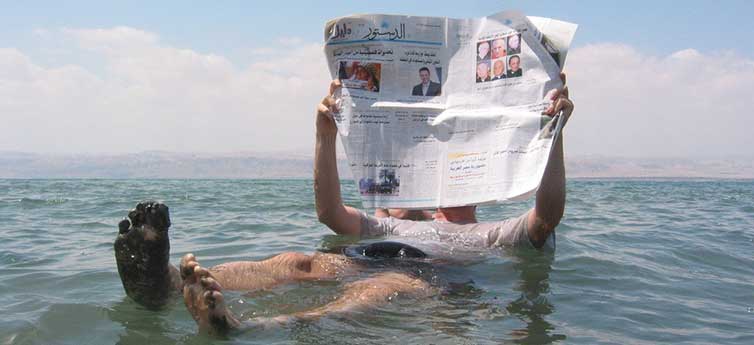Israeli researchers claim to have pinpointed the first permanent geological change made by humankind, the moment when humans first altered the planet’s geology.
They have identified a set of erosion processes made 11,500 years ago in the Dead Sea Basin. This would represent the first hint of what increasingly has been called the Anthropocene, a geological era in which the planet’s characteristics are defined by just one species, Homo sapiens.
The evidence comes from the Dead Sea Drilling Project, which provides a sedimentary record of the last 220,000 years. And the scientists have found that erosion rates in the Dead Sea Basin during the Neolithic were, they say, dramatically at odds with the known tectonic and climatic regimes of the period under review, less than 12,000 years ago.
“Human impact on the natural environment is now endangering the entire planet,” said Shmuel Marco, of the Tel Aviv University school of geosciences.
—
Agriculture’s mark
“It is therefore crucial to understand these fundamental processes. Our discovery provides a quantitative assessment for the commencement of significant human impact on the Earth’s geology and ecosystems.”
That is an academic’s way of conceding that the discovery is of only academic importance: archaeologists have known for more than a century that human civilisation began, roughly 12,000 years ago, in the Fertile Crescent with the end of the last Ice Age.
Stone Age nomad hunter-gatherers began to domesticate animals, cultivate grains and pulses and plant fruit trees and vines, and then build first small villages, and ultimately great ancient cities.
“Natural vegetation was replaced by crops, animals were domesticated, grazing reduced the natural plant cover, and deforestation provided more area for grazing,” said Professor Marco. “All these resulted in the intensified erosion of the surface and increased sedimentation, which we discovered in the Dead Sea core sample.”
—
Human footprint
The scientists report in the journal Global and Planetary Change that they measured a threefold increase in the fine sand carried into the Dead Sea by seasonal floods, and indicated changes in human activity that coincided with, and made possible, the exponential growth of humankind over the last 11,000 years.
The 100 centuries since the end of the last Ice Age have been known as the Holocene. Geologists argue that human-wrought change has altered the Earth so much that it warrants a new name: they propose a new epoch called the Anthropocene.
Humans have burned fossil fuels at such a rate that they could warm the planet to levels not seen for many millions of years. In doing so, they have altered the climate of the planet so dramatically that there is no fear of any return of the Ice Ages.
They have built, produced and destroyed on such a scale as to create a geological stratum that will survive as a permanent record of human existence long after Homo sapiens is extinct.
So the Dead Sea evidence is just an indicator of when the era of permanent change may be said to have begun: long before the first bronze or iron tools, humans made their mark with stone adzes, stone sickles and fire, and changed a landscape.
The sediments from the Dead Sea core have already evidenced periods of lush growth and extended drought, and serve as a reminder that the region is still affected by climate change.
Right now, the region is experiencing the worst drought in 900 years. Climate change could deliver even harsher things to come, according to a new study last year.
So the discovery by the Tel Aviv scientists represents a possible starting point: the story of human civilisation and human-induced climate change had a beginning that has now been identified in the sands of time 11 millennia ago at a depth of 457 metres under the Dead Sea.
The ending has yet to be written, but that too will be recorded, ultimately, in geological strata.
A version of this article first appeared on the Climate News Network







